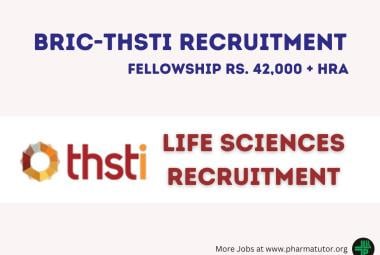 ABOUT AUTHOR
ABOUT AUTHOR
Vinay Kumar Singh.
Chief Research Officer
Parammount Cosmetics India Limited,
Bangalor, Karnataka
vinay@parammount.com
The success of a product in Today’s market place is less a function of the product performance and more a function of how it is promoted to the public. Although the cosmetic industry appears to be dominated by marketing agents, chemists play a key role in supporting their company in its choice of claims used in product promotion
Claims substantiation is defined as the process of proving and documenting that the claims you plan to make are true. Some of the earliest documented issues related to claims and honesty include a 1917 decision of the United States District Court for Rhode Island. In that case, the court fined Clark Stanley the outrageous sum of $20 for “misbranding” its Clark Stanley Snake Oil Liniment. Stanley and many of his like-minded travelling salesmen were selling cheap, synthetic versions of “snake oil,” which in traditional Chinese medicine is a useful treatment for a variety of ailments.
Claims are assertions made by manufacturers and retailers about the beneficial qualities and characteristics of their goods and services. In the area of cosmetic products, claims are primarily linked to statements on the performance of the products, such as for example anti-aging effects or reducing cellulites.
Cosmetic claims are words, sentences, paragraphs, logos, graphics or simply implications that describe the proposed use of a cosmetic, its benefits and its attributes. Consumers are faced with claims on the product packaging, in advertising material, at the point of sale and through all modern channels of communication such as newspapers and magazines, radio, television and the internet and social media such as Facebook, Linkedin, Twitter, blogs etc. It is important for companies to be honest and consistent about what they are explicitly or implicitly stating on their products.
Today, consumers are hardly enabled to make informed choices when buying cosmetic products as they are confronted with plenty misleading claims in advertising and on the product packaging. In shops, consumers see shampoos that claim to give more volume, repair the structure, to make the hair shinier, softer and heat resistant. When looking for toothpaste, plenty of products claim to whiten the teeth, to repair small fractions through nanoparticles and to prevent caries and formation of toothing stone. Creams claim to nourish the skin, to reduce wrinkles, to reduce cellulites and to achieve “visible” effects immediately, after a couple of hours or “over night”. In recent years the amount of “green” claims which refer to alleged organic or sustainable properties of products has increased.
Outrageous claims have been used to market products, often driven by the company to bring in sales. In Today’s market place, product claims are more abundant and, in many respects, no less restrained.
Most of these claims suggest that consumers will experience well-being and happiness when applying cosmetic products. When making such claims, they are partly pure advertising without any substantiation from the side of the manufacturer. Many other cosmetic products pretend to substantiate the claim with “scientific evidence” and testing on consumers. However, in many cases questionable methods are used for substantiating a claim. This may have a very negative effect on the credibility of science from a consumer point of view.
Consumer research shows that consumers want clear, credible and comparable Information in order to make informed choices that correspond to their needs and expectations.
There are, of course, many types of claims that make regulatory oversight complicated. Cosmetic claims can relate to the physio-chemical characteristics of the cosmetic, chemical analysis, product performance and customer preference. This being said, not all claims require substantiation, such as emotive claims that say nothing about the product but simply refer to the consumer on an emotional basis.
Gerald Thain, formal assistant director of Bureau of consumer protection in U.S has summarized the 5 most common types of cosmetics claims:
• Claims based on studies and medical research to give the product an aura of scientific respectability.
• Implicit and Explicit claims that the product is safe for use as advertised.
• Claims including terms that have no standard definition such as “Hypoallergenic”, “Dermatologist tested”, “Medicated”, “Natural”, “organic”.
• Claims that use exotic terms for ingredients which are commonly contained in the similar products.
• General efficacy claims.
These claims conveys benefits to the consumer in an attempt to convince them to buy the product.
Claim support, is the process of providing information to show that product claims are legitimate. Role of formulator/Chemist is to begin a dialog at the very initial stages of development, both with the claims professionals and the marketing teams who have the ultimate responsibility for the success of the product in the marketplace, and to design the product accordingly
NOW YOU CAN ALSO PUBLISH YOUR ARTICLE ONLINE.
SUBMIT YOUR ARTICLE/PROJECT AT editor-in-chief@pharmatutor.org
Subscribe to Pharmatutor Alerts by Email
FIND OUT MORE ARTICLES AT OUR DATABASE
Products should be formulated using materials with measurable benefits and at levels that translate to tangible benefits for the consumer under normal usage conditions.
The companies must be prepared to defend their claims if their veracity is challenged, whether it be government agencies, consumer protection groups or competing companies. This is why, in practice, a company needs to have claims support strategy worked out before proceeding to market the product. If a company fails to do this, it could get caught in a compromising legal situation that could be embarrassing and expensive.
As scientists, formulators have a duty to keep our companies safe by ensuring the claims made about products are true. If you even have a shadow of doubt about a claim, consult with senior for guidance, and review it with your legal advisors. There is no room for snake oil salesmen in today’s market.
The type of claims support that is required depends upon the nature of the claim being made and the country in which the product will be marketed. Some claims may be supported by physical measurements of the product, as in case of “Skin cream X is thicker than Brand Y”. Similarly, a statement like toothpaste Z contains 25% more can be supported by a measurement of net contents. There are other claims, based upon product functionality, such as “reduces perspiration by 20%”, that requires specific clinical studies. And claims such as “smells better” or “leaves your skin feeling cleaner” that require specific assessment of consumer perception.
Some product claims are considered drug claims. Examples of this would be OTC products, such as dandruff shampoos, fluoride toothpaste, and antiperspirants and deodorants.
Depending on the situation, claims may be crafted prior to or after formula development has been completed. In either case, it is likely that the claim will be developed before the support testing is completed. Typically, the claim is developed first and then supportive testing is implemented.
When gathering evidence, remember substantiation testing is required when the claim refers to the effectiveness of a product, or the benefits or improvements in skin, hair and/or nail attributes that result from using the product. To develop a claim, the developer must:
• Know the product(s) intimately
• Understand the science of the product(s)
• Use the right “experts”
• Understand the claim(s) being made—what do they really say?
• Question how the competition, consumer and inspecting authority will react to the proposed claim(s)
By Assuming nothing, Believing skeptically and Checking the facts, the developer can compile a coherent set of claims. However, remember the data you generate does not give you the claims, only the information from which you develop the claim. Claims typically are: unique, superior, comparative, efficacious or factual, and they tend to be divided into three main categories:
1.Cautious, e.g., “contains vitamins known for their antioxidant properties.” Even if you only include a few molecules.
2.Extreme, i.e., any unsubstantiated claim including uncorrelated data, incorrect substantiation, incorrect conclusions, animal vs. human efficacy data, in vitro data, etc.
3.Ambiguous, for example, “cosmeceutical soother,” which legally means nothing.
These categories can be further subdivided as follows.
Empty, including phrases such as “approved by dermatologists.” Does this mean the product was, in fact, assessed by a team or board of credible dermatologists?
Unfinished, i.e., “…lip gloss does it with more shine.” Does what with more shine?
Different/unique, “There’s no other mascara like it.” Was the clinical study conducted vs. every other mascara on the planet?
Vague, i.e., “Your skin blossoms over night.”
Endorsements from celebrities, superstars, etc.
Scientific/statistical, e.g., “78% of users liked it.” Liked what?
Complimentary, “Because you’re worth it.”
Questioning, “Could your skin use a miracle?
Some claims are more subjective than others and can’t be supported on the basis of instrumental readings or objective measurements. These include evaluation by “real” consumers or evaluations conducted by trained panelists. Claims supported with this type of data are entirely subjective. Example includes odour perception, tactile properties of the hair and skin sensations (such as itching, burning, cooling & others).
There are various new claim manufactures put before consumer. One such claim is “Free-from” ingredients claim. When paraben bashing became widespread, We, cosmetic formulators scrambled to find new preservative systems and the seriousness of this trend became truly apparent. Ingredient after ingredient has been attacked, and no amount of communication by the industry or its experts seems to have had an impact. Cosmetic manufacturers have retreated from known and trusted ingredients and have been forced to embrace ingredients we know far less about. We have eliminated parabens. Some manufacturers moved to the MI/MCI preservative system but the European Union—and most recently Health Canada—have rushed to eliminate it. Phenoxyethanol became an important ingredient in our armamentarium, and it is also; now under pressure.
A key factor to bear in mind is that extraordinary claims require extraordinary proof. For example, to claim that a product reverses the aging process and makes the consumer taller, reams of support data will be required. On the other hand, if on the back of the shampoo label the label states that the product contains 100% natural aloe, some simple supplier documentation will probably suffice. The appropriate supporting data depends on the type of product, the nature of the claim, and how the claim is advertised.
The need to support claims is not always driven by the need to protect your company from governmental intervention. Often a claim can be challenged by a competitive company who perceives their business is being hurt by your advertising. The television networks have right to ask for substantiating documentation before airing advertisements. Most countries have either drafted a law or a guideline for this purpose.
The sixth amendment of the European Directive on Cosmetic Products requires manufacturers to have a readily available dossier with the proof of the claims made on their products. Commission Regulation (EU) No 655/2013, was published July 10, 2013, along with associated guidelines for proper use of the regulations. These documents lay down the common criteria for the justification of claims used in relation to cosmetic products. The common criteria they discuss are things such as legal compliance, truthfulness, evidential support, honesty, fairness, informed decision making along with detailed information of the best practices to apply to experimental studies. The commission authorizes the filing of a complaint when it has a reason to believe that the law has been or is currently being violated.
In this competitive environment, it is essential to have
powerful product claims that an everyday consumer can easily understand and differentiate from other similar products. Products should speak for themselves at the point of sale with claims that are not only appealing but truly deliver on performance. Supporting product claims that can withstand scrutiny is a challenging activity that needs to be done before market introduction. World of cosmetics has become increasingly more competitive, the major finished goods companies act themselves as “watchdogs” and will directly challenge any data or claims that they consider to be exaggerated or lacking adequate support. The chemist, along with legal professionals,not only recognizes the need for claims support, but also designs and implements suitable testing. The appropriate test data must be on file when needed.
NOW YOU CAN ALSO PUBLISH YOUR ARTICLE ONLINE.
SUBMIT YOUR ARTICLE/PROJECT AT editor-in-chief@pharmatutor.org
Subscribe to Pharmatutor Alerts by Email
FIND OUT MORE ARTICLES AT OUR DATABASE










.png)


